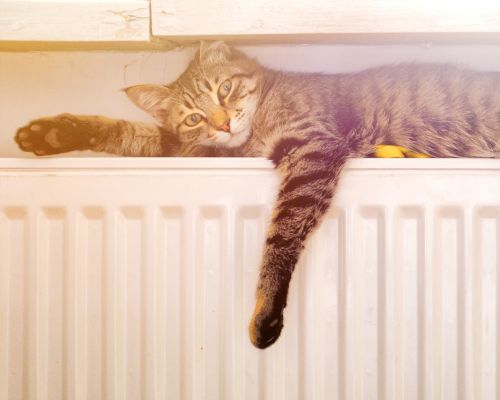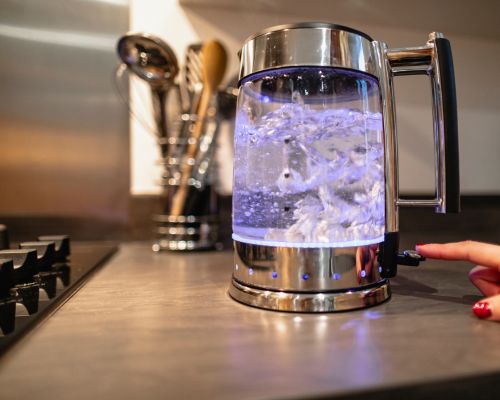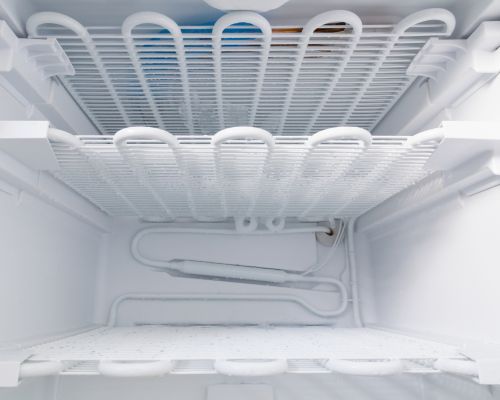As the sun begins to peek through the clouds, we often start to hear the phrase “it’s time for a spring clean”. But what is spring cleaning, and does this tradition actually benefit our homes?
Spring cleaning is a yearly tradition that helps us reset after a cold, dark winter. This may look like decluttering our wardrobes, or deep cleaning areas that we tend to overlook in our usual cleaning routines, meaning we can end up with a rather long cleaning list to tackle.
However, giving our homes a thorough clean and organisation enables us to refresh our spaces–and not just from an aesthetic point of view–but also when it comes to the energy efficiency of our homes.
You may not think so, but the build up of dust and dirt in our homes can actually lead to certain areas functioning less efficiently, meaning we use more energy to maintain and heat them.
Because of this unknown fact, we here at 100Green have shared six easy tasks to add to your spring cleaning checklist this year for those wanting to overhaul their home, and increase their functionality.
Six cleaning hacks to spring clean for energy efficiency
1. Dust your radiators and thermostats

Over time, dust can accumulate on your radiators and thermostats. Dust on your radiators can impact your home’s heat distribution, and forces your heating system to work harder, consuming more energy.
For any thermostats, a build up of dust can impact the accuracy of your thermostat’s readings and thus affect the temperature levels of the rest of your home.
When it comes to how to clean a radiator, you first want to ensure your heating is turned off, and then you can use a microfiber cloth or vacuum cleaner with a brush attachment to remove any dust and debris. For the back of your radiator, you should use a long handled duster to get these hard to reach spots.
You can then use a mixture of soap and water to wipe down the outside of your radiator, using a microfibre cloth to dry and remove any streaks.
It is also important to ensure that you are bleeding your radiators every year to keep them functioning at their best.
Cleaning your thermostat is a quick and easy task to add to your spring cleaning checklist, simply use a cloth to wipe the surface, and a soft bristled brush or compressed air to remove dust from any crevices.
2. Descale your kettle

You may be spring cleaning your kitchen from top to bottom, gutting out your cupboards of produce and cleaning your shelves.
But there is a lesser-done task that can make a huge difference in your kitchen: descaling your kettle. Mineral deposits, also known as limescale, build up over time in kettles, making them less efficient at heating water, leading to longer boiling times and more energy used.
To descale your kettle, fill the kettle with equal parts water and white vinegar, bring it to a boil, and let it sit for at least 30 minutes before rinsing thoroughly.
Want to learn more about saving energy this spring? Why not take a look at our top energy saving tips for spring.
3. Defrost your freezer

We all know the dreaded task of cleaning out our fridges and freezers, and although this can feel like a big task, it is something that’s necessary to maintain the energy efficiency of our units.
Having excess ice buildup in your freezer not only reduces available storage space, but it also forces the appliance to work harder to maintain the correct temperature, increasing your energy consumption and affecting your freezer’s functionality.
To defrost your freezer, turn off your unit and remove all food items. Some food can’t be refrozen after defrosting, so be sure you use these on the day to reduce any waste!
Place your other items in a cool box to keep them in a good condition while your freezer defrosts.
You can then let the ice melt naturally or place a bowl of hot water on your shelves to speed up the process. Lay out towels around your unit to collect any water. Once thawed, you can use this as an opportunity to do some spring cleaning, wiping down your freezer and cleaning any messes.
Regular defrosting helps your freezer run more efficiently, generally you should do this once a year, depending on your model. However, if you’re finding that ice is building up very frequently there may be a problem with your freezer’s seal that needs addressing.
4. Clean behind appliances
Dust and debris behind large appliances like refrigerators, ovens, and washing machines can obstruct airflow, causing them to overheat and operate inefficiently.
When tackling each room in your spring clean, pull these appliances away from the wall and vacuum or wipe the area to remove dirt and dust. Keeping these areas clean improves energy efficiency and extends the life of your appliances.
If you’re looking for more ways to save energy with your white goods then why not take a look at our energy saving tips for washing machines?
5. Check and replace filters
We have filters all over our home, from our bathroom’s extractor fans, to our vacuum cleaners and dehumidifiers.
These are often overlooked when it comes to cleaning, and can have a huge impact on the cleanliness and efficiency of our homes as clogged filters can restrict airflow and force appliances to work harder.
For appliances such as dehumidifiers, you should check and replace filters regularly according to the manufacturer’s recommendations to ensure optimal performance, improve air quality, and reduce energy consumption.
You may also find that your bathroom’s extractor fan is collecting dust and debris. When it comes to extractor fan cleaning, you should:
• Unscrew the cover and leave this to soak in some hot, soapy water.
• You may have a removable dust filter, which you can then clean using water.
• Use a soft brush to get to any difficult to reach areas of your fan.
• Once the dirt and dust is removed, you can use a wet, soapy cloth to wipe down your fan.
• Once everything is dry, replace all your components.
6. Rearrange furniture for better heat circulation

Something many of us do when it’s time to do a spring clean is rearrange our furniture, which can give our spaces a completely new look. But a lesser-known impact of your furniture’s set up is how it affects your heating.
If your furniture is blocking radiators or vents, it can obstruct airflow and make it harder for heat to circulate throughout the room—meaning your radiators will take longer to reach your chosen temperature.
By simply moving sofas, curtains, or cabinets away from radiators, you can allow warm air to disperse more effectively, improving heating performance and saving on energy.
By adding these easy energy-saving tasks to your spring cleaning checklist, you’ll not only have a fresher home but also a more efficient and cost-effective one.
If you’re looking for more ways to lead a sustainable lifestyle, take a look at our top sustainable swaps for an eco-friendly lifestyle.